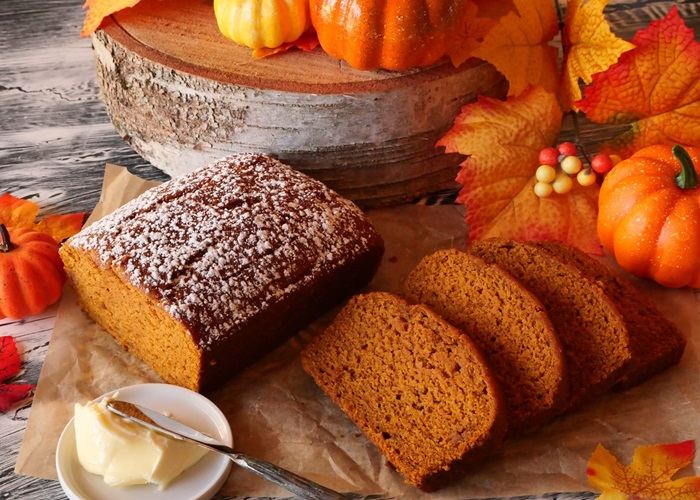Diabetes is a condition that affects how the body processes sugar, making diet management crucial. People with diabetes need to be mindful of their carbohydrate intake to maintain stable blood glucose levels. Today, we explore whether pumpkin bread can be a delightful addition to a diabetic-friendly diet, providing detailed insights into its benefits, preparation, and cultural significance.
Understanding the Role of Carbohydrates
A Reflection on Tradition
In many cultures, traditional diets emphasize whole, unprocessed foods that promote health and longevity. These diets often include an abundance of whole grains, vegetables, and fruits known for their nutritional value. This tradition underscores the importance of choosing foods that support overall well-being.
Symbol of Comfort and Nourishment
Pumpkin bread has long been associated with comfort and nourishment. In various societies, it symbolizes warmth and home-cooked goodness, especially during festive seasons like fall. Its cultural significance lies in its ability to bring people together, fostering connections and shared moments.
Exploring Pumpkin Bread as a Diabetic-Friendly Option
Nutritional Benefits of Pumpkin
Pumpkin is rich in fiber, vitamins, and minerals, which are beneficial for managing diabetes. It contains:
Fiber: Helps slow down sugar absorption.
Vitamin A: Supports eye health.
Potassium: Balances electrolytes.
Antioxidants: Protects against cell damage.
Preparing Your Kitchen
To make pumpkin bread suitable for diabetics, consider using ingredients that lower the glycemic index and provide additional nutrients:
Whole Wheat Flour: Rich in fiber and complex carbohydrates.
Almond Meal: Provides protein and healthy fats.
Sugar Substitutes: Use natural sweeteners like stevia or erythritol.
Eggs: Add structure and nutrition.
Spices: Cinnamon, nutmeg, and cloves enhance flavor without adding sugar.
Healthy Fats: Olive oil or coconut oil for heart health.
Prepping Ahead
Before starting, prepare all ingredients. Measure out dry ingredients, mix wet ingredients separately, and preheat the oven. Having everything ready ensures a smooth baking process.
Step-by-Step Guide to Making Diabetic-Friendly Pumpkin Bread
Detailed Cooking Process
Ingredients:
Whole Wheat Flour: 2 cups.
Almond Meal: 1/2 cup.
Baking Powder: 2 teaspoons.
Baking Soda: 1 teaspoon.
Salt: 1/4 teaspoon.
Cinnamon: 1 teaspoon.
Nutmeg: 1/2 teaspoon.
Cloves: 1/4 teaspoon.
Eggs: 3 large eggs.
Pumpkin Puree: 1 1/2 cups.
Olive Oil or Coconut Oil: 1/2 cup.
Stevia or Erythritol: 1/2 cup.
Vanilla Extract: 1 teaspoon.
Steps:
Preheat Oven: Set oven to 350°F (175°C).
Mix Dry Ingredients: In a large bowl, whisk together whole wheat flour, almond meal, baking powder, baking soda, salt, cinnamon, nutmeg, and cloves.
Mix Wet Ingredients: In another bowl, beat eggs, pumpkin puree, olive oil, stevia, and vanilla extract until well combined.
Combine Mixtures: Gradually add wet ingredients to dry ingredients, stirring until just combined. Avoid overmixing.
Pour Batter: Transfer batter to a greased loaf pan.
Bake: Bake for about 50-60 minutes, or until a toothpick inserted into the center comes out clean.
Cool: Remove from oven and let cool in the pan for 10 minutes before transferring to a wire rack to cool completely.
Enhancing the Experience
Pairing with Other Nutrients
- Proteins: Serve pumpkin bread with a side of Greek yogurt or cottage cheese for added protein.
- Vegetables: Pair with a fresh salad or roasted vegetables for a balanced meal.
- Nuts and Seeds: Sprinkle chopped walnuts or sunflower seeds on top for crunch and healthy fats.
Drinks Pairing
Choose drinks that complement the richness of pumpkin bread. Herbal teas like peppermint or ginger can help soothe the palate. Unsweetened almond milk or water also offer hydration without spiking blood sugar.
Cultural Significance
A Taste of Tradition
Pumpkin bread holds a special place in many cultures, particularly during autumn festivals. In North America, it’s a staple during Thanksgiving and Halloween. The tradition of baking pumpkin bread brings families together, creating lasting memories.
Symbol of Harvest and Gratitude
In agricultural societies, pumpkin bread symbolizes the harvest season and gratitude for nature’s bounty. Sharing this bread with loved ones fosters a sense of community and appreciation for simple pleasures.
Conclusion: Embracing a Balanced Lifestyle
In conclusion, diabetics can enjoy pumpkin bread when prepared with diabetic-friendly ingredients. By focusing on whole grains, natural sweeteners, and healthy fats, you can create a delicious treat that supports blood sugar control. Each step of the process, from selecting ingredients to final touches, contributes to a balanced and flavorful dish that promotes well-being.
Through this guide, you not only learn how to bake pumpkin bread but also gain insight into its cultural significance. So, gather your ingredients, roll up your sleeves, and embark on this culinary adventure. Enjoy the journey of flavors and the joy of sharing healthy meals with loved ones. Happy cooking!
By mastering the art of baking diabetic-friendly pumpkin bread, you open a door to a world of flavors and traditions. Whether enjoyed as a snack or part of a balanced meal, this bread offers a taste of history and innovation, inviting everyone to savor the beauty of culinary heritage. Each slice reflects the principles of simplicity, balance, and harmony that define healthy eating, reminding us of the joys of nourishing our bodies and sharing food with others.
Related topics:


